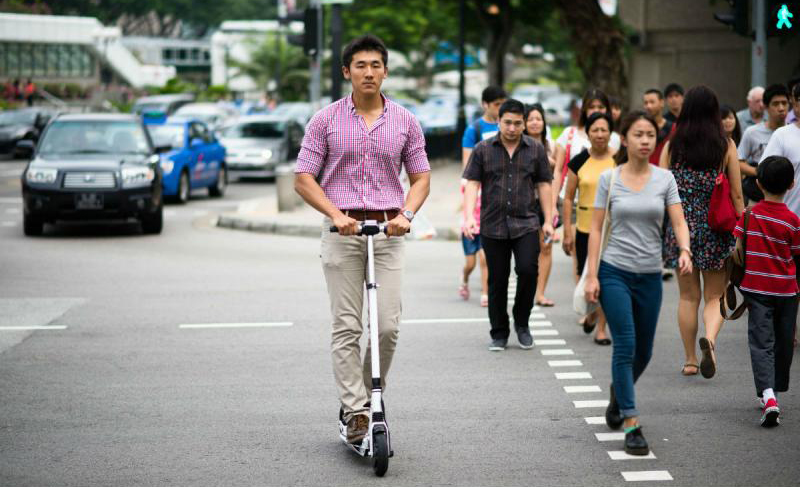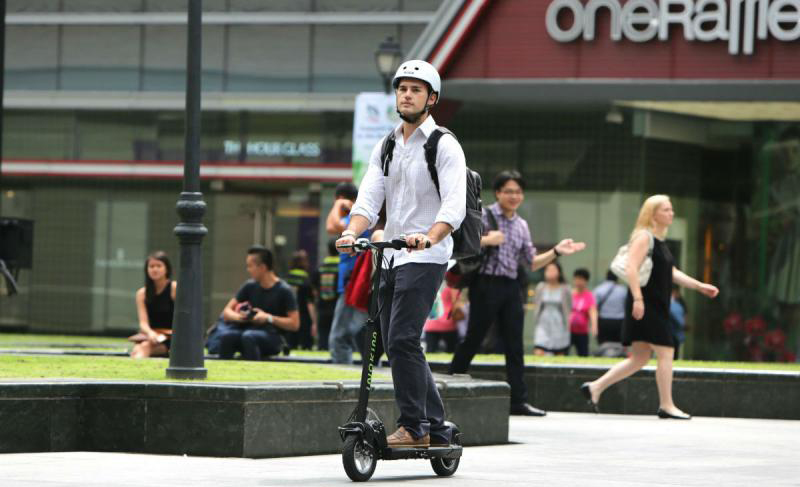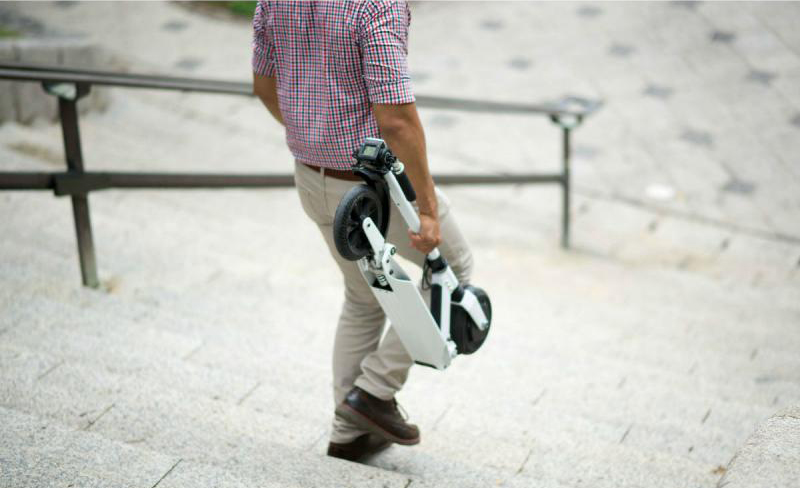More and more Singporeans are using their electric scooters and even unicycles—also known as Personal Electric Vehicles (PEVs)—to get around right now, and that trend looks set to continue.
It’s no surprise either, given many models can travel at 25km/h for up to 35km on a single two-hour charge. That’s enough to get you to and from work in some cases, and there’s plenty of time to top up the battery in between. What’s more, they’re portable enough to bring onto public transport should you have a long commute, and are eco-friendly too.
With that in mind, we set out to answer many lingering questions surrounding PEVs, and figured the best way to do that would be to ask Andreas Dale, Marketing Manager of Falcon PEV (that’s him in the main picture, not a male model), who already answers these questions every day as part of his job selling them.
Is it legal?

Contrary to popular belief, it’s indeed regulated by the LTA, and they have rules surrounding it. But the general rule is to err on the side of caution, which most Singaporeans should be familiar with. But did you know you have to equip your PEV with a white light in front and a red one at the back? And if you can’t, you will have to wear a luminous vest or make yourself visible during the night. What PEV owners might not realise also is that pedestrians have the right of way on pedestrian crossings and in areas of high people traffic, you might even have to dismount and push your PEV across.
Where are they allowed?
PEVs aren’t allowed on roads no matter what speed they’re going at. According to LTA, they’re allowed on footpaths at the top speed of 15km/h or cycling paths at 25km/h. Obviously, there aren’t any speed cameras installed on the pedestrian paths (yet) so it’s up to your own civic-mindedness to keep to the speed limits.
Do you need to wear safety gear while riding a PEV?

Even though it’s not a legal requirement at the monent, Dale recommends that “all riders of PEVs should put on the necessary safety gear such as helmets—an essential—wear proper footwear, and have proper safety lighting to make themselves visible. Of course, not forgetting the bell as well”.
What are the pros and cons of travelling on a PEV?

Good PEVs cost upwards of a grand, so it’s not a purchase to be taken lightly. You’ll need to understand what they can or can’t do before making a decision, no matter how fun the test ride seemed at that point of time.
PEVs can be used as a first and last-mile solution. Instead of walking to the train station which takes you 15 minutes to walk or five minutes to drive, you scoot to the train station, fold it, bring it along on the train to your destination, unfold it, and ride to your office. It’s rather effortless compared to a normal bicycle, which you need to pedal.
—
For the full story, click here.

This story originally appeared on Stuff Singapore, bringing you what’s next in the world of tech and gadgets, with a twist.





